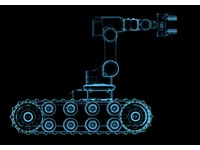
View original at www.idtechex.com
The robotic industry is looking for the next big opportunity that could one day rival the automotive sector in size. It may have found its answer in the logistic and material handling sector. In this article we will focus on the use of mobile robots in automating the goods-to-person step in logistics and material handling. The robotic industry is looking for the next big opportunity that could one day rival the automotive sector in size. It may have found its answer in the logistic and material handling sector. The IDTechEx report Mobile Robots and Drones in Material Handling and Logistics 2018-2038 focuses on all mobile robots and drones in this sector. It also provides technology roadmaps and twenty-year market forecasts, in unit numbers and revenue, for 12 technologies: automated guided vehicles and carts (AGVs and AGCs); autonomous mobile vehicles and carts/units; mobile picking robots; last mile delivery ground robots (droids) and drones; and autonomous trucks and light delivery vans (level 4 and level 5 automation). In this article we will focus on the use of mobile robots in automating the goods-to-person step in logistics and material handling. Traditional automated guided vehicles and carts (AGVs and AGCs) are a familiar sight in many facilities around the world. They act as distributed conveyer belt systems, carrying items along well-defined paths. Depending on the specific navigation technology, this path can be marked by magnetic tape, conductive wires, reflective strips and so on. These AGVs and AGCs work well and are trusted to handle all manners of payload sizes ranging from a few Kg to several tonnes. Their work flow is, however, fixed and thus hard to modify. The on-site installation time is often long and the scope for flexible human-robot collaboration is limited. The next generation of this mobile automation will be […]



Leave a Reply
You must be logged in to post a comment.